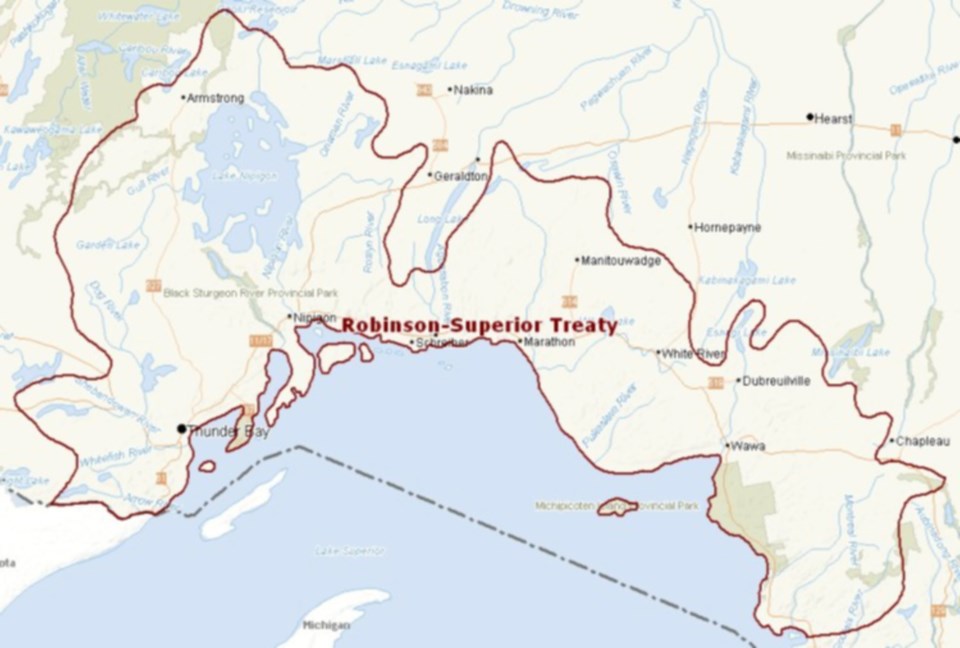A Université de Montréal professor providing expert testimony at a high-profile treaty annuities court case believes an “undercount bias” — meaning the census count was lower than the population size — exists within Canada’s historic population data for Indigenous Peoples, potentially skewing historic census counts for Anishinaabe people residing in Robinson Superior Treaty territory.
Dr. Simona Bignami, a noted demography expert with a decade of experience in demography of Indigenous Peoples in Canada, took the stand in a Sudbury, Ont. courtroom Monday to offer her opinion on the accuracy of population data for Anishinaabe people living in a treaty territory stretching from Batchawana Bay to Pigeon River along Lake Superior.
A report authored by Bignami on the population of Robinson Superior Treaty communities, from the time the treaty was signed in 1850 to present day, was also entered into the court as evidence during day 13 of the ongoing trial which will hear months of evidence and expert testimony.
Testifying in Ontario Superior Court, the noted demographer said that mandatory attendance in residential schools, along a corresponding reluctance to be recorded and counted because of this, could help explain why Anishinaabe population figures dwindled in the territory during that time period.
Bignami also said that women and children — in addition to the elderly people who couldn’t physically make it to a local trading post in order to be counted by a superintendent working on behalf of Canada — could have been to blame for some declines in recorded population counts by potentially being excluded from them.
Using an 1872 annual report to illustrate one of the pitfalls in determining population figures, Bignami told the court that some Anishinaabe were most likely absent from “government works” (people in the territory collecting government salaries or annuities) and were not counted on pay lists. A “sizable” number of women would be excluded from the counts, she opined, because they were less often employed by the government, as the primary paid occupations of the day were making moccasins, blankets or working in domestic service.
There were also some spikes in Anishinaabe population numbers observed by Bignami, like the sudden increase in population from 1,488 counted residents in treaty territory in 1875 to 1,875 the following year. Bignami said there were two factors which contributed to the increase: annuity payments had increased fourfold in that period, "incentivizing" people to collect the beefed-up annual treaty payments and be counted. Bignami also believes women and children were included in population counts under the 1876 Indian Act by this time.
Bignami conceded that piecing together an accurate snapshot of the Anishinaabe population within Robinson Superior Treaty territory — laid out in an expert report authored by the professor and entered into the court as evidence — was a “difficult undertaking.”
The demography expert said she doesn’t know how population data was produced after 1960 when annual reports on Indigenous Peoples in Canada ceased. She says population data after 1960 could have been from the Indian Register — the official record of people registered under the Indian Act in Canada — but can’t confirm this because those files, much like individual files from the Canadian census, are confidential.
Elder Marcel Donio, a member of Bingwi Neyaashi Anishinaabek north of Nipigon, Ont. and an outgoing justice of the peace in Thunder Bay, Ont. also provided testimony Monday, speaking to the Anishinaabe worldview when it comes to gift giving, sharing and reciprocity and how those cultural concepts would relate to the treaty relationship between the Crowns and the Anishinaabe communities along Lake Superior.
Meanwhile, a similar treaty annuities court case involving signatories to the 1850 Robinson Huron Treaty has been on hold since January as confidential settlement negotiations continue with representatives from both Canada and Ontario.
